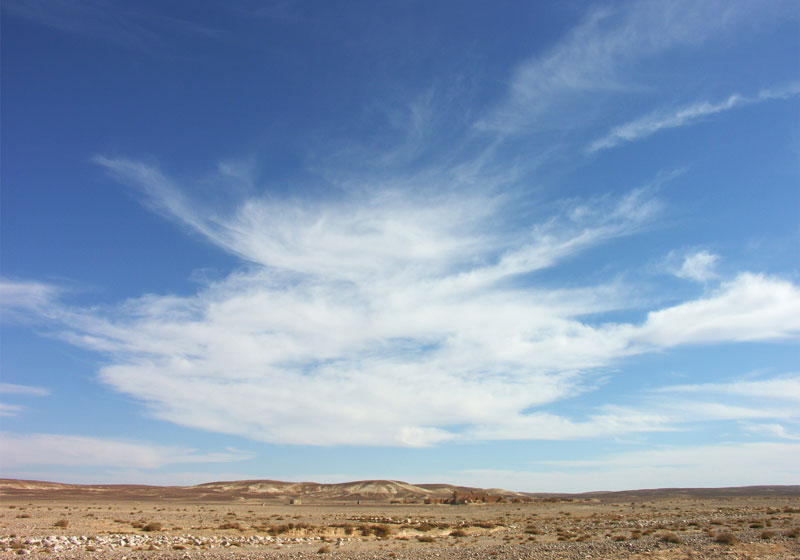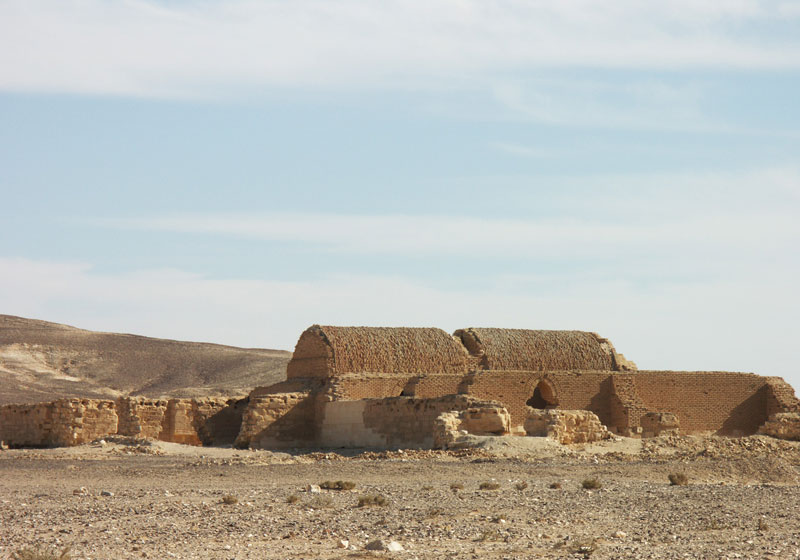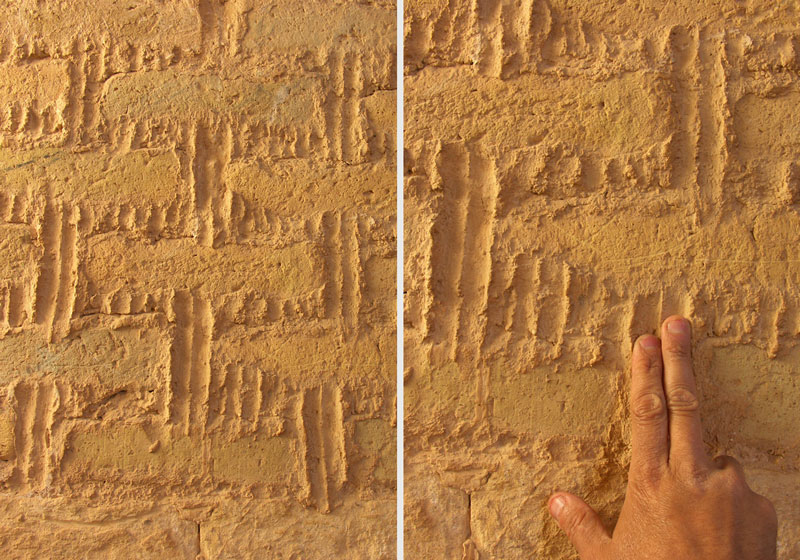In the Depth of the Desert
In the flat desert, negotiating a rugged road heading east, watching the rising sun while driving into its golden disk, these are moments that will remain embossed in your memory among few others, and will endure as pleasant and timeless. Driving in the eastern Jordanian desert is like a ritual, it induces devotion, and it also polishes one's soul, vision and mind. As the golden sunshine warms-up a horizon of deep blue and sends the cool dawn away, you start seeing small valleys with desert bushes; what might appear as a barren landscape is slowly emerging under the sunlight, full of surprises; the desert is not empty.
A drive to Qasr Tuba is a good sample of Jordan’s flint desert. Unlike basalt or sand, flint sends a ring while the tires of your car make their way –the slowly turning wheels play endless flint lengths, each ring differently, making the whole desert sound like a continuous keyboard of a strange musical instrument.

Desert roads form an all-directional web. Whenever you need to find some landmark, drive to a high spot. From one of these high spots Qasr Tuba suddenly appears, reclining in a wide valley that runs north-south. From a distance the structure is recognizable due to shadows and dark patches of the interior as demarcated by vertical walls as well as collapsed openings; otherwise the building almost completely melts with the rest of the desert in monochromatic earth-tone.

The name Tuba means brick or better al-Tuba can be translated (or almost transliterated) as adobe, hence the Arabic origin of the English word. In Jordan, where stone is plenty, the use of fired brick as building blocks is something of a paradox. Among all archaeological structures the only other case where fired brick is extensively used is Qasr Mushatta near the Queen Alia International Airport. Besides that, only few segments of fired brick might be found, such as in one dome at a corner room in the Mamluk castle at Aqaba.
In general fired mud brick is a technique that evolved in regions where stone is scarce, namely river basins or deltas. Both Qasr Tuba and Mushatta appear very Umayyad, Persian or Mesopotamian. Originally the Qasr was very large, in two identical parts, each is a 70 sq.m enclosure and linked by a corridor. As this structure was never completed, the existing building represents the ruined remains of only the northern half.
Construction took place around AD 743 with Qasr Mushatta. It represents a trend where the emirs or caliphs constructed resorts for desert hunting, lodges for retreat surrounded by private miniature wildlife reserves.
The most touching feature can be seen and felt inside the Qasr. As the walls that carry the vaults have never been finished, plastered or extensively used, their grouting is still fresh, as if made a few weeks ago. In fact you can see how the mortar was applied between the bricks. The parallel finger grooves that run vertically are so well kept that you can pass your own fingers in the same manner, as the very fingers of those masons who were about to finish this structure when the orders to stop reached this difficult desert address.

Qasr tuba represents a rare specimen of early Islamic architecture. Together with other desert castles: Amra, Harraneh, Mushatta, and Hallabat, they constitute the majority of the earliest structures of Islamic architecture in the world. Tuba, and the rest, place Jordan in the opening chapter of any book on the art and architecture of Islam.
An early morning, full day destination, requiring a reliable 4x4, a full icebox, and the company of someone who knows how to get there. Wait for a day with some clouds. Tuba can best be reached from the Desert Highway, drive south from Amman till one kilometer before Swaqa Prison or 14 km before Qatarana, and take the exit to the east which has a small sign for Tuba. Only the beginning of the road is paved. Drive east for about 65 km, then the Qasr should be slightly to the north, in a valley -which makes it extremely difficult to find.